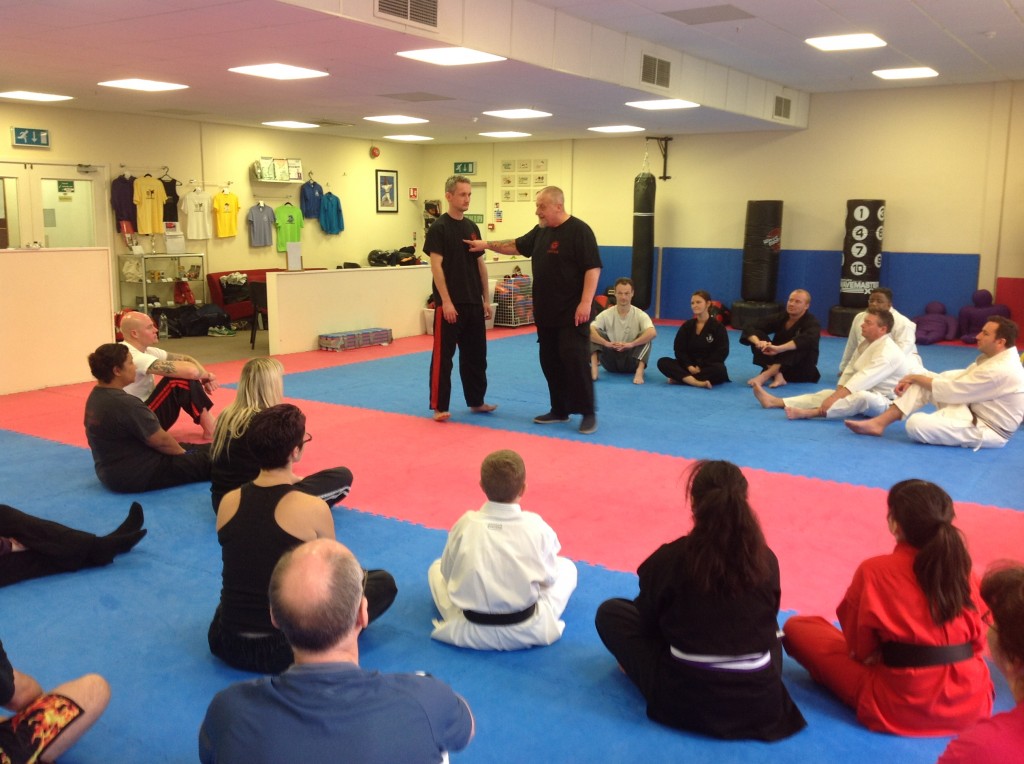 The Eight Principles of Martial Arts by Wayne Roberts
The Eight Principles of Martial Arts by Wayne Roberts
These eight ideas are the underlining principles that need to form the foundation of sound ‘soft’ martial arts. If skill in martial arts can be thought of as a series of layers, then this is the first of these followed by the 13 dynamics (The Eight Gates & Five Steps as covered previously) and then finally different techniques applied on top of these which will be specific to each form of martial art.
The Eight Principles
Feet – are the way in which our bodies connect to the ground, so are key to transmission of energy through the body and to balance. Feet in general should always be pointed in the direction of power and used to press against the floor to generate power – this is the key to good rooting and the ability to generate a spiraling of energy from the feet, up the legs and through the rest of the body. Contact with the floor should be though the pads of the feet, always being mindful of where your center of balance is – toes should just be lightly in contact with the floor.
Posture – in order to really master awareness of where your body is and what is happening in terms of balance and stance it is key to be constantly mindful of this every day, not just in training. Through the pressure generated by the feet, the body naturally brings itself upright. The feeling here should be as if the head is pulled upwards by a string and then allowing the body to soften and relax so the body is effectively not ‘standing on its bones’. Good posture will give you a free passage of energy and also enables you to breath correctly.
Mind – its important to have a high level of awareness or ‘liveliness’ in order to be able to stay highly focused. This is especially important in threatening situations where it is critical to be able to maintain a strong, concentrated and powerful mindset. Discipline and willpower are also key to achieving this. Poor posture or breathing can particularly effect the mindset.
Breath – good breathing is key to increasing the oxygen flow through the body and ensuring the mind stays alert. Breathing action should come from the lower abdomen (the Tan Tien), pushing outwards on breathing in and opening up the back and shoulders.
Internal – in Tai Chi this is also know as ‘energizing the inner orbit’, opening up the energy flow around the body. On breathing in, you channel Chi through the Governing Vessel (running over the skull and along the spine) and breathing out channeling through the Conception Vessel (bisecting the front of the body). The Governing and Conception Vessels are connected by touching the tongue to the top of the mouth. Internal also refers to the ability to channel energy/force from the contact point with an opponent through the body, down the legs and into the feet. Key here is being able to connect the top and the bottom half of the body, so for example force is not just taken into the shoulders or upper body resulting in being thrown off balance.
Power – power can be generated from many parts of the body, but is most effective when used in conjunction with each other e.g. with power being ‘layered’ up through the actions of different joints or muscles. An example would be a punch, which some students may only use the hips to generate power. However, when layered and timed correctly power can be greatly amplified through using first the muscles around the spine, then to bring in the action of the shoulder, arm, waist, hips, legs and finally the feet. The majority of the power in this instance is generated from the spine, which is the core muscle at the centre of the move.
Wedge – the point at which out hands our other part of the body would normally travel to when meeting an attack (the interception point) and combines the first four principles above to be able to first block and then begin to redirect a strike. Key here is the feeling of ‘wedging’ through an attack towards the opponent, and this principle is key to self defence aspects of any martial art, however is offensive rather than defensive. The wedge principle can be applied with many parts of the body including legs, head and shoulders as well as arms and hands.
Spiral – spiraling comes after the wedging action and is a way to turn the an opponents energy or momentum against them, taking force away from the opponent and turning into a lock, strike or throw. A spiraling action is also present in the way force is transmitted through the body and the legs to the feet and again helps to keep the connection in place between the upper and lower halves of the body.
As can be seen, many of the above are closely interlinked and in most cases cannot really practiced without the other, in particular the first four principles feet, posture, mind and breath. In Chinese martial arts these are commonly know as Neigong which emphasises training the coordination of an individuals body with the breath. The last four principles are closely aligned with Qigong, which is the channeling of Chi through the body. Chi can also be used to repel, parry or absorb an attackers energy.
References:
The Eight Principles are at the heart for the Shikon system put in place by Steve Rowe Shi Kon’s Chief Instructor. More information can be found her

